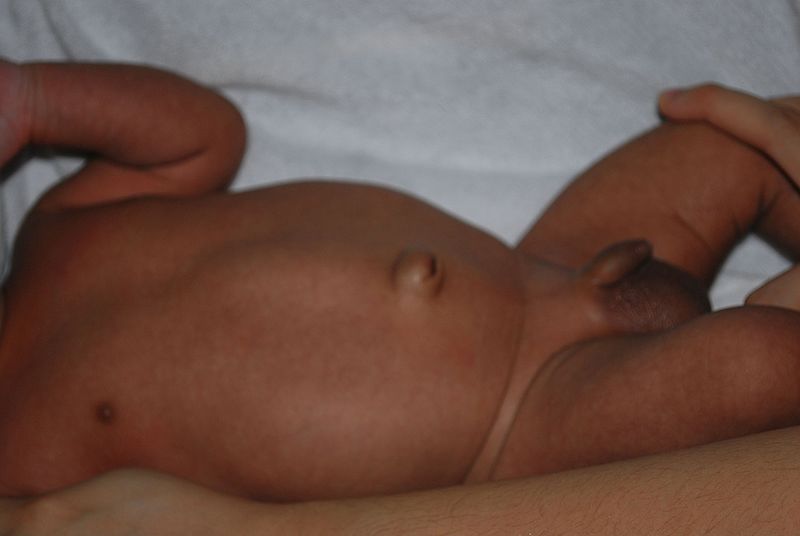The umbilical cord connects the baby to the mother and is cut at the moment of birth, leaving only a small piece known as the “umbilical stump,” which will become the belly button. This area is quite unprotected and delicate, as it is still healing. Therefore, it is essential to pay special attention to local hygiene to prevent possible bacterial infections and contamination.
Because of this, many mothers get worried when they notice something unusual in the area, like a more “swollen” belly button. However, this situation is extremely common in babies between 1 and 2 months old and is known as an “umbilical hernia.” In the vast majority of cases, the umbilical hernia does not pose any risk.
It is not customary to treat a swollen newborn belly button because, in general, the condition regresses spontaneously before the first birthday. Now, if the hernia does not go away on its own, a surgery called omphaloplasty can be performed to correct the issue.
What Is a Hernia?
A hernia1 is a small bulge that, when it appears at the belly button, forms in the opening of the abdominal wall muscles. In babies, it is also common for it to appear in the groin if an organ or tissue from the little body moves into the upper part of the muscle.
A fun fact: during the first weeks of pregnancy, this opening in the embryo’s belly is quite large2 because the intestine forms outside of it. By the end of the first trimester of pregnancy, the intestine returns inside the abdomen and the muscular wall of the belly closes, leaving only a tiny opening for the umbilical cord.
A hernia can also be called “herniation,” a phenomenon that occurs when layers of tissue, fluids, or organs—in this case, the intestine—push through an existing opening, causing the bulge and preventing closure.
Understanding the Swollen Belly Button
A swollen newborn belly button is more common in girls than in boys, mainly affecting premature babies. These umbilical hernias occur in between 10% to 20% of children and, fortunately, usually do not cause pain or harm to the baby. Generally, hernias are between 1 to 5 centimeters in size.
When an umbilical hernia is suspected, the area around the belly button may appear more swollen and puffy, especially when the baby is crying or pooping. This is normal and happens due to the force and pressure inside the abdomen. Sometimes, it is precisely this pressure in the delicate belly button area that causes the hernia.
Is Any Treatment Needed?
Despite the appearance not being very pleasant or may even be a bit frightening, don’t worry. Umbilical hernias do not pose any problem if local hygiene is kept up to date. But it is important to keep an eye on the area, which should not become sore, very swollen, or hard.
It is most likely that the hernia will go away on its own, usually by the third birthday. After this time, if the belly button remains swollen, the pediatrician should evaluate the need for surgery.
IMPORTANT: do not try to push the baby’s belly button back in. Do not use tight clothes, bands, or coins, as these may suffocate the child or injure the area.
What If the Baby Feels Pain?
If the baby feels discomfort or the area becomes hard and changes color, a pediatrician should be consulted as soon as possible. Some umbilical hernias require surgical intervention, although these cases are rare. In emergency situations, a piece of the baby’s intestine may get “caught” by the hernia, compromising local circulation and even causing vomiting.
The good news is that if the baby needs surgical intervention, the operation is simple and generally doesn’t require more than a morning or afternoon in the hospital.
How Is Surgery for a Swollen Belly Button Done
Omphaloplasty3 or laparoscopy are surgeries used not just for bulging belly button hernias but also for stenosis, absence of the belly button, among others. Basically, the procedure consists of small incisions, almost unnoticeable, from 0.5 to 1 cm made at the bottom of the belly button. The surgeon’s goal is to remove excess fat and tissue and reshape the belly button.
Sometimes local anesthesia is used, but this is discussed and agreed upon with the doctor beforehand. On average, the procedure lasts from 1 to 2 hours.
Also See: First Bath in the Maternity Ward and at Home – Care to Take












